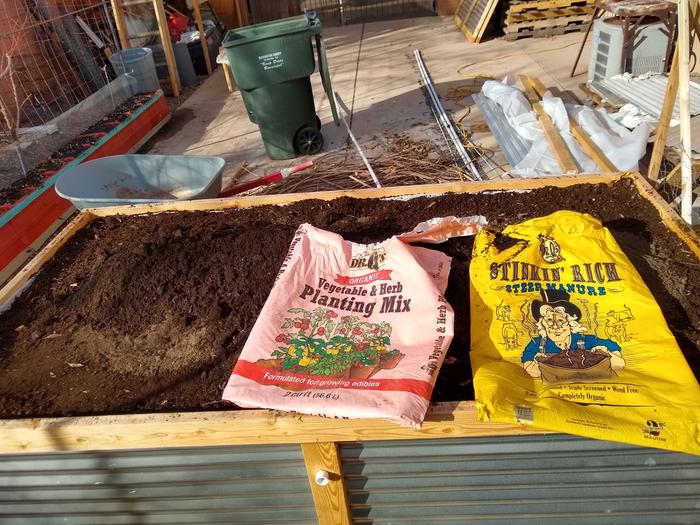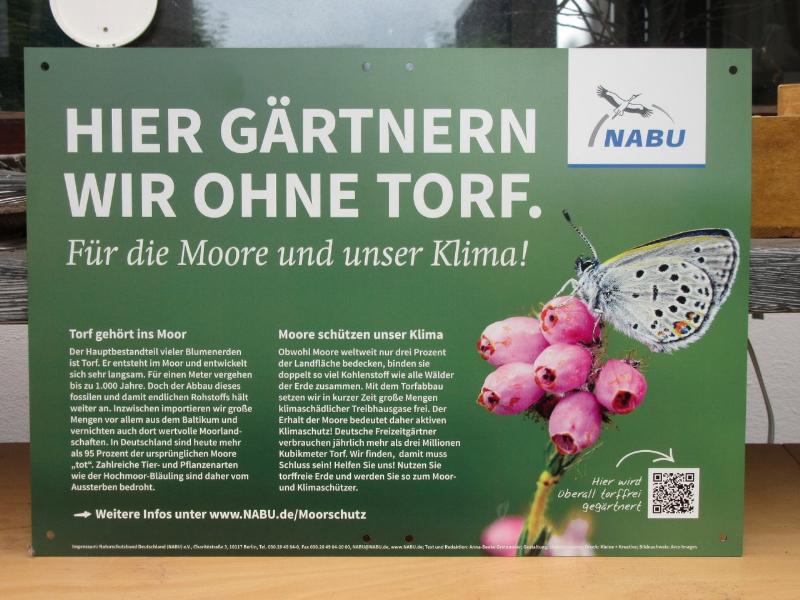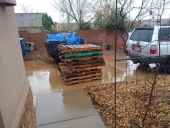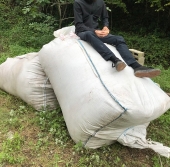
 8
8












The original Silicon Valley hillbilly.


 1
1




Some places need to be wild
 2
2




Iterations are fine, we don't have to be perfect
My 2nd Location:Florida HardinessZone:10 AHS:10 GDD:8500 Rainfall:2in/mth winter, 8in/mth summer, Soil:Sand pH8 Flat



 3
3







The original Silicon Valley hillbilly.




 2
2






The original Silicon Valley hillbilly.




 1
1





The original Silicon Valley hillbilly.











 1
1




Some places need to be wild







The original Silicon Valley hillbilly.











 3
3




Some places need to be wild
 3
3









 1
1




The original Silicon Valley hillbilly.











 2
2




Some places need to be wild



 3
3








The original Silicon Valley hillbilly.




 2
2





The original Silicon Valley hillbilly.











 1
1




Some places need to be wild










 1
1




Some places need to be wild



 2
2





The original Silicon Valley hillbilly.

 3
3




Joshua Bertram wrote:
On top of that, was placed a mixture of more of the wood chip compost, along with a large bag of peat moss, along with turkey manure/compost from a local source here in UT, along with a tiny amount of my native clay soil.

I am only one, but still I am one. I cannot do everything, but still I can do something; and because I cannot do everything, I will not refuse to do something that I can do. (E.E.Hale)










 1
1




Some places need to be wild







Eric Hanson wrote:Joshua,
Sorry, I was responding to an earlier post when this one came up.
Regarding your question, I would really try to get as much of the spores into the wood as possible, so I say whir up another batch and pour directly over the woodchips.
Great workings you have going there. I hope my earlier post and the link can be of some help.
Eric
The original Silicon Valley hillbilly.




 2
2




Anita Martini wrote:Great work, Joshua, thanks for sharing.
I have one raised bed running and one in the making.
Last weekend we had a warm spell and we filled the bottom of the new one with all cuttings, rose prunings and material we needed to get rid of.
We also got several huge buckets of horse manure mixed with straw from the local stable. We will also add the accumulated kitchen scraps of the last weeks, chicken beddings etc.
The idea is to have a hybrid of compost/raised bed.
We will have to wait for planting it (last frost day is mid May).
We have used pallets as side walls so there is no need for support in the middle (the other raised bed was a set offered by a local carpenter and we have black insulation foil on the inner walls and a metal rod for stabilization).
The pallets in your picture look like the ones we have here. I am not paranoic when using them as walls, but as you put them inside your bed I wonder if there are different categories in the US as well? Here we get either temperature treated or chemically treated pallets, and for our bed we picked four pallets that were temperature treated.
They show "HT" like in this pic: https://www.logismarket.de/ip/schenker-deutschland-ag-europac-gmbh-ippc-holz-palette-ippc-holz-palette-640647-FGR.jpg
Joshua Bertram wrote:
On top of that, was placed a mixture of more of the wood chip compost, along with a large bag of peat moss, along with turkey manure/compost from a local source here in UT, along with a tiny amount of my native clay soil.
I have to comment on the peat moss though.
It is a rare resource (not in the garden centers, alas) because to build one mm of peat moss it takes a full year. Peat bogs are being depleted worldwide inspite of being unique habitats for many plants and wildlife. In addition, they are great carbon sinks.
For further reading, here are two links (there are more if you google a bit):
https://greenerpods.com/2018/05/28/peat-bogs-important-stop-using/
https://www.life.ca/naturallife/0712/asknlpeat.html
Here in Germany you can even get signs to put on your fence where you can indicate that your garden is peat moss-free:
We need to raise awareness among gardeners that we should work sustainably without peat moss.
The original Silicon Valley hillbilly.








The original Silicon Valley hillbilly.











 1
1




Some places need to be wild
 1
1




Honesty is a good policy and we're all on a road to more sustainable living. I bought a bale of peat moss about 20 years ago. Then I learned all the downsides so it sat there. Then I planted blueberries bushes. They *really* like peat moss. I soak a little every spring for them and I figure my bag will last at least another 5 years. After that I'll have to learn some other technique to help maintain the acid level they like. I've heard pine needles are good, but I'd have to plant a pine tree (or find someone local who has one.) If I struggle with an alternative when the time comes, I know exactly where to come to get help!Joshua Bertram wrote:
From here on out I won't use it anymore. I was even hesitant to say that I used any, because I am aware that it's not something that's popular to use on this site due to it's non sustainability. I was just being honest.
Visit Redhawk's soil series: https://permies.com/wiki/redhawk-soil
How permies.com works: https://permies.com/wiki/34193/permies-works-links-threads







Eric Hanson wrote:Joshua,
Maybe I missed this earlier, but from the sounds of things, I gather that you are growing on top of cement or other solid, impermeable surface? If so, I certainly understand your concerns.
When I first started this project, I had chipped up a bunch of brush and let them sit in a trailer (with wooden sides and bottom!) for a year. I thought the greenwood would be safe, but the slowly rotting chips actually did some damage to the trailer. I should have just put them on the ground where they belonged all along.
Since I can just dump onto soil, the soil biota work their way into the woodchips and the decomposers in the woodchips work their way into the soil beneath. I had previously been under the misconception that the wood would deprive the soil of nitrogen. I couldn’t be more wrong. The soil under a woodchip pile is made more—not less—fertile by the woodchips by the expanded biological activity. Whenever I chip now, I put it on the ground immediately, sometimes just chipping right onto the soil itself (other times chipping into a trailer and then dumping immediately). I occasionally let the pile just sit there to age before spreading. I do this in order to encourage a little bacterial decomposition which helps the fungi later on.
Joshua, if you cannot get to soil contact, the fertile holes can help. I occasionally add my own urine in advance to encourage a little bacterial development. I do this by getting a cat litter container, peeing into it until it is 1/2 full or so, then fill the rest with water and pour. The cat litter containers are about 2.5 gallons and have a wide cap (perfect for peeing, and for storage). This can help out with the bacteria when you don’t have soil contact. Also, once you spread, a fertile hole with simulate some soil and also help.
These are just my thoughts and take or leave them as you see fit.
Eric
The original Silicon Valley hillbilly.








Jay Angler wrote:
Honesty is a good policy and we're all on a road to more sustainable living. I bought a bale of peat moss about 20 years ago. Then I learned all the downsides so it sat there. Then I planted blueberries bushes. They *really* like peat moss. I soak a little every spring for them and I figure my bag will last at least another 5 years. After that I'll have to learn some other technique to help maintain the acid level they like. I've heard pine needles are good, but I'd have to plant a pine tree (or find someone local who has one.) If I struggle with an alternative when the time comes, I know exactly where to come to get help!Joshua Bertram wrote:
From here on out I won't use it anymore. I was even hesitant to say that I used any, because I am aware that it's not something that's popular to use on this site due to it's non sustainability. I was just being honest.
The original Silicon Valley hillbilly.

 4
4




No, I have never used elemental sulfur. Generally, my soil is acid enough (low pH) that my growies are happy, particularly as I've tried to improve the soil enough that I only have to water them once or twice deeply during our summer drought. Our well water is high pH, and I don't yet have an efficient system for storing the amount of winter rain that I'd love to be able to hang on to. My limiting factor is sunlight due to tall trees. Thus my blueberries are in half barrels on top of a graveled parking area - so I *totally* get what you're dealing with! The blueberries have to be watered during the drought, and they would be much happier being watered with rain water, but giving them some extra peat is enough that they haven't died, although they certainly haven't thrived either.What are the thoughts on using elemental sulfur? For the last two years I've bought 50lb bags of it to help lower the high ph soil we have here. I know it's considered organic, but I never heard anyone mention it was a no/no like peat moss. Obviously you didn't mention using it for the blueberry, and I'm sure you know it's available.
Visit Redhawk's soil series: https://permies.com/wiki/redhawk-soil
How permies.com works: https://permies.com/wiki/34193/permies-works-links-threads










 1
1




Some places need to be wild



 1
1




As a general guiding rule, permies try to avoid any commercially produced input due to its high embodied energy, risk of environmental damage during the production of it, risk of it having contaminants we don't want, and the fact that buying it often supports a "world level" system that we're trying to shrink to "community level". But we'd also prefer that someone grow their own veggies using as organic as possible methods, than be buying all their food. So it all comes down to compromise. You are already trying to "grow your own inputs" by raising chickens and making compost. If the only way, this year, you can get your soil pH low enough to grow some veggies, I will certainly support any organic compromise you try, but I will also support you asking and educating yourself about finding alternatives that you know are produced locally, safely, organically and sustainably.
I think the point Eric Hanson was trying to make is that rather than mixing your wood chips with all your compost, you might do better to fill your beds with just the wood chips, then dig holes exactly where you want to plant something, and fill just that part of the bed with the best soil/compost mix you can. In other words, concentrate the good stuff, rather than dispersing it. The plant roots will reach out into the wood chips, but they'll start from a position of strength. One way I've done that in a new bed is to stick a "tube" (usually a used plant pot) in the spots I want plants, and filled the bed around them. Then I fill the tube with good soil, slide the tube out, and stick the plant in. That way all the wood chips don't just collapse into the space.
The original Silicon Valley hillbilly.
















The original Silicon Valley hillbilly.











 1
1




Some places need to be wild
 1
1




If there is one thing the Wizard of Oz has taught me, it is not to trust school teachers on bicycles.
 1
1




If there is one thing the Wizard of Oz has taught me, it is not to trust school teachers on bicycles.







The original Silicon Valley hillbilly.











 1
1




Some places need to be wild










 1
1




Some places need to be wild



 4
4




The original Silicon Valley hillbilly.











 2
2




Some places need to be wild
 1
1




Check out my podcast! https://allaroundgrowth.buzzsprout.com/ ~ Community Group Chat: https://t.me/allaroundgrowth



 1
1






The original Silicon Valley hillbilly.


|
I will open the floodgates of his own worst nightmare! All in a tiny ad:
The new gardening playing cards kickstarter is now live!
https://www.kickstarter.com/projects/paulwheaton/garden-cards
|









